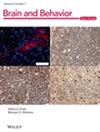Investigating the Blood Microbiome in Parkinson's Disease, Schizophrenia, and Posttraumatic Stress Disorder
Abstract
Introduction
Recent studies have challenged the idea of sterile blood, suggesting the presence of a blood microbiome. The detection of microbial nucleic acids in blood is thought to reflect the status of distant microbial niches, including the gut. However, the origins and viability of these microbes remain debated. In this study, blood microbiome signatures in Parkinson's disease (PD), schizophrenia (SCZ), and posttraumatic stress disorder (PTSD) were evaluated by extracting RNA-sequencing (RNA-seq) reads that did not map to the human genome. Furthermore, we investigated the correlation between the gut and blood microbiome in PD, SCZ, and PTSD to gain insight into possible mechanisms behind disease etiology.
Methods
We used whole-blood samples from PD (cases: n = 14; controls: n = 19), SCZ (cases: n = 17; controls: n = 22), and PTSD (cases: n = 45; trauma-exposed [TE] controls: n = 34) cohorts. The RNA paired-end sequence reads that did not map to the human reference genome (hg38/GRCH38) were isolated using the sequence alignment/map tools (SAMtools). These unmapped reads were classified against known archaeal, bacterial, and viral microbial genomes using Kraken2 (v2.1.3; k2_standard_08gb_20240112.taz.gz database), and further taxa abundances were estimated using Bracken (v2.9). The differential abundance of blood microbial signatures between case-control groups for each cohort was assessed using DESeq2 (v1.38.3). Each cohort was analyzed separately.
Results
Statistically significant differences in the abundance of Pseudomonas aeruginosa and Acinetobacter wuhouensis in PD and Salmonella enterica, Staphylococcus aureus, Pseudomonas sp. CC6-YY-74, and Shinella sumterensis in SCZ were observed compared to cohort-specific controls. We observed no statistically significant differences in microbial signatures between PTSD cases and controls.
Conclusion
We found blood microbial signatures associated with PD and SCZ; however, no significant blood microbial signature was observed for PTSD. These results should be interpreted with caution as biases may have been introduced due to low concentrations of microbial signatures. Further research is required to understand the biological implications of these findings, in particular, taking into account the repurposed data source, and the potential for contamination (during phlebotomy, and background contamination from DNA extraction and reagents) known to impact the analysis of low-biomass samples.


 求助内容:
求助内容: 应助结果提醒方式:
应助结果提醒方式:


